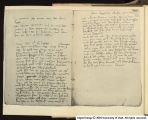| OCR Text |
Show PAR V AN ACCOUNT OF THE FIRST ENGLIS FORGERIES AND THE EFFORTS O SIR WILLIAM CONGREV TO PREVEN " COUNTE ITIN 'HE Bank of England was established in 1694, but it was no until sixty-four years later, or in 1758, that the first forgery o its bank notes was practiced. This original attempt at deccptio was in no way a skilled achicvement where thepcrpc[r\(or wa versed in papermaking, watermarking, and engraving but wa the crude attempt of a Stafford linen (\mpcr, Richard Wilia Vaughan, to change the figures of a note to a higher denomination. Vaughan was found « l:y exceuted a Tyburn on the r1th of M: 517 the footsteps o Vaughan, so that for twenty years counterfeit bank notes were excdingly scarce. The next case of counterfeiting bank paper i England occurred in 1778 when John Mathicson, a native of Scotland, tried to manufacture spurious money in duplicate of tha used by the Darlington Bank. Mathieson's methods were far mor skillful and ingenious than the rough and cumbersome attempt of Vaughan, Mathieson was versed in engraving, and while he di not actually make his own paper, he devised imitation watermark in phin = which went undetected for a considerable time, a g fraudulent bank notes was entirely new to th authonucs i lhcy could not coneeive how their notes could possibly be imitated. In Mathicson's clever work the engraving wa finely executed and the watermark, which the bankers had considered an infallible eriterion, tallied so preciscly with the origina that no difference could be perceived. Several papermakers wer of the opinion that the devices were genuine watermarks and ha 26 |



































































































































































































































































































































































































